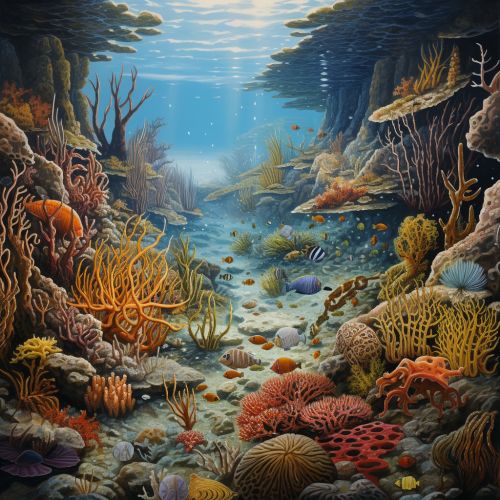Cambrian Explosion
Introduction
The Cambrian Explosion refers to a relatively short period in the geological time scale when most major animal phyla appeared in the fossil record. This event, occurring approximately 541 million years ago in the Cambrian Period, marked a profound change in life on Earth.
Background
Prior to the Cambrian explosion, most organisms were simple, composed of individual cells occasionally organized into colonies. Over the following 70 to 80 million years, the rate of diversification accelerated, and the variety of life began to resemble that of today.
Causes
The causes of the Cambrian explosion are not well understood, and several theories have been proposed. These include changes in the environment, such as increasing atmospheric oxygen levels, and the evolution of developmental mechanisms that facilitated the evolution of complex body plans.
Environmental Changes
One of the most significant environmental changes during the Cambrian period was the increase in atmospheric oxygen levels. This is thought to have facilitated the evolution of larger and more complex organisms that required more energy to survive.
Evolutionary Developments
Another theory proposes that the Cambrian explosion was triggered by the evolution of key developmental mechanisms. These mechanisms, known as Hox genes, control the body plan of an embryo along the head-tail axis. This means that changes in these genes can result in significant changes in the body plan of the resulting organism.
Impact
The Cambrian explosion had a profound impact on life on Earth. It marked the beginning of a period of complex multicellular organisms, which led to the biodiversity we see today.
Conclusion
The Cambrian explosion remains one of the most significant events in the history of life on Earth. Despite the many theories proposed, the causes of this event remain a topic of ongoing scientific investigation.
See Also


